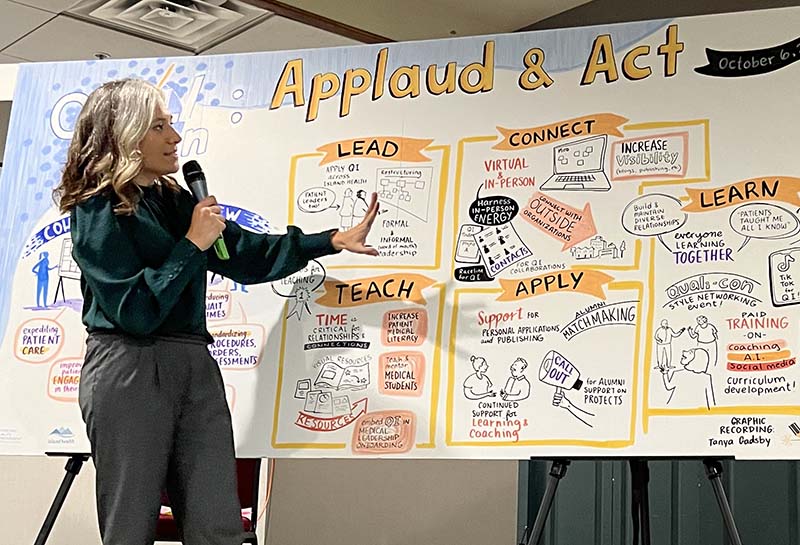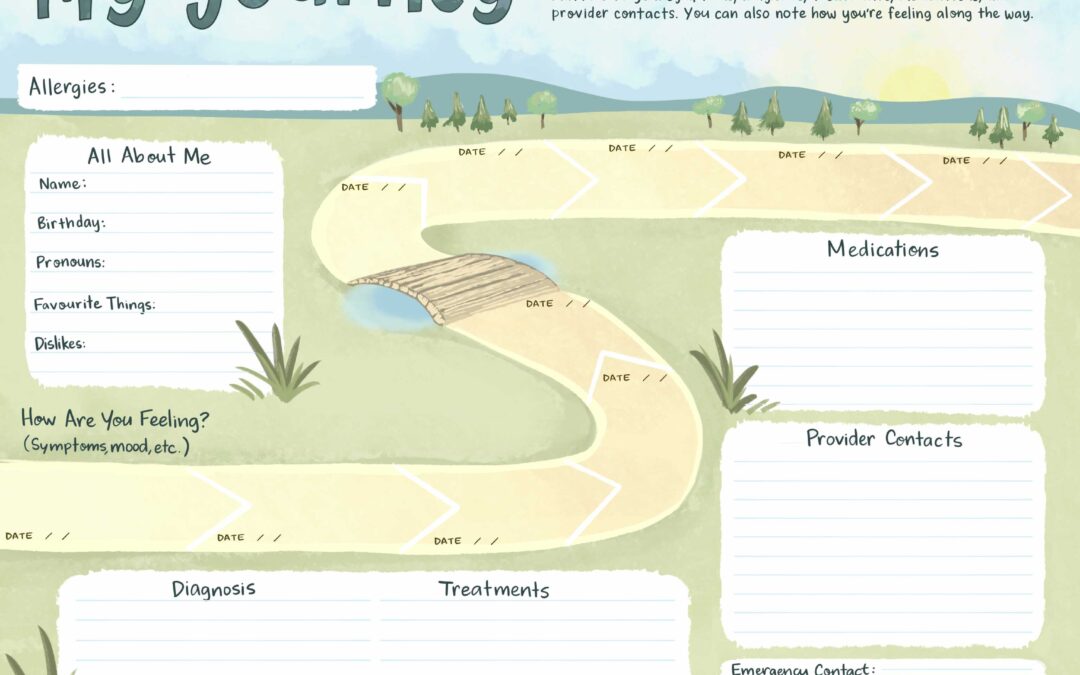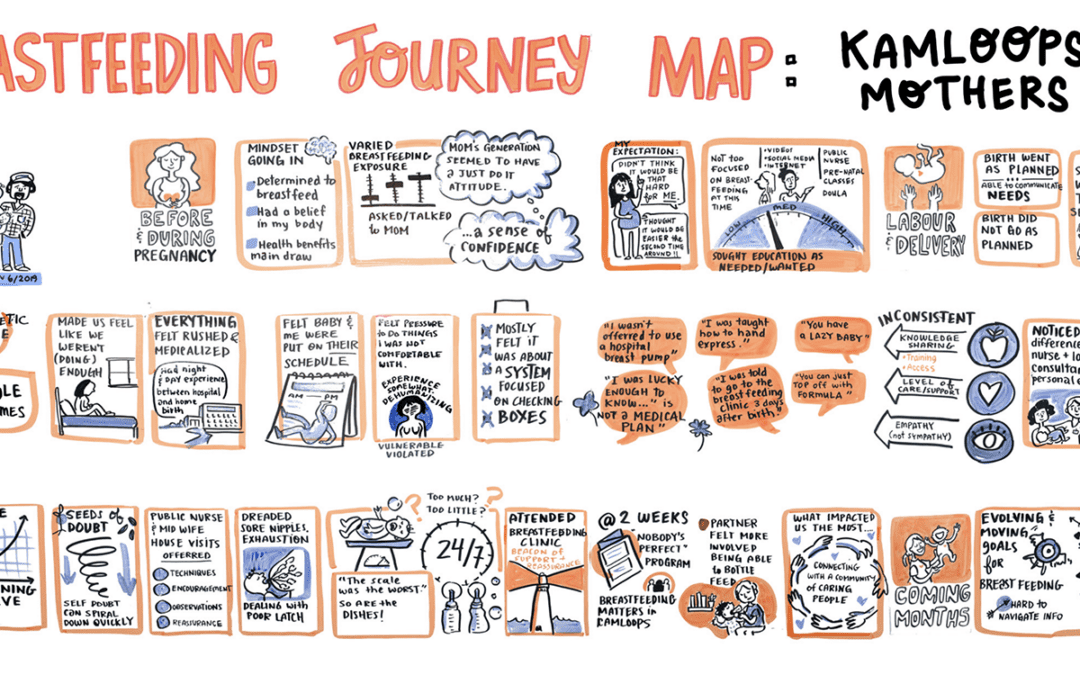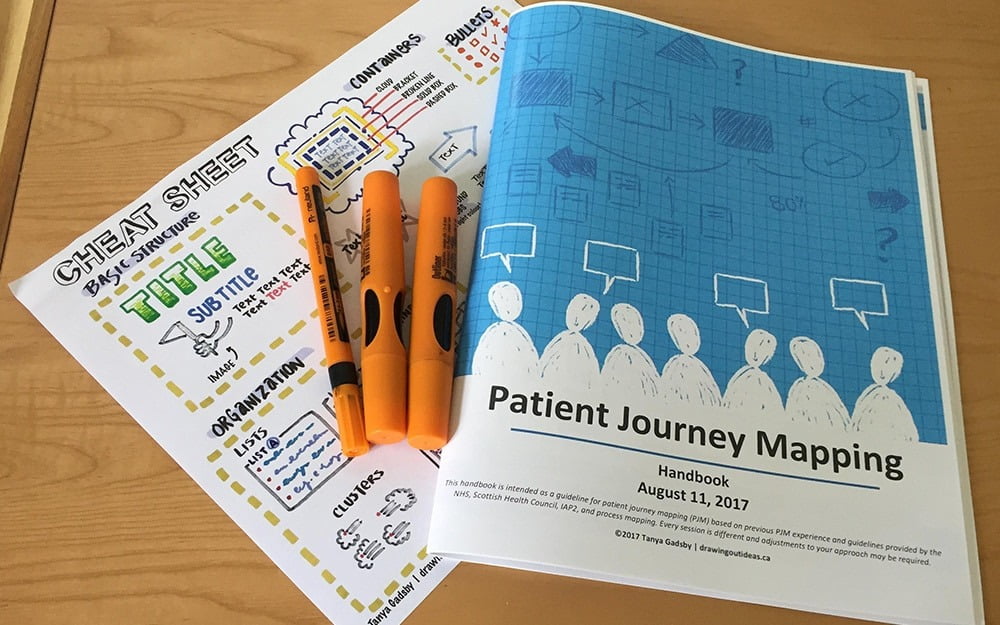Enhance Your Report Outs with a Sensemaker
Large meetings often include breakout sessions where participants split into smaller groups for focused discussions. Typically breakout groups then choose one person to “report back” their ideas to the whole room.
Why report outs fall flat
“We’ve got 5 minutes to hear from all tables!” the facilitator might say, followed by a member from each group rapid-fire sharing to the whole room everything their group discussed.
Ideas are repeated over and over between groups, and no context is provided as to how the group reached these ideas, or how it connects to the bigger picture. People in the room who have difficulty hearing or require additional time to process verbal information may find it challenging.
By the end of this waterfall of information, people are either checking their phones, or wishing they could ask a question about how a group came up with an out-of-left-field idea.
The role of the Sensemaker
Breakouts are critical for gathering wisdom from everyone in the room, giving people time to discuss concepts, and connect with their peers. But we need to consider the process of gathering those insights and sharing them back to the room.
This is where the Sensemaker comes in. A Sensemaker—often a graphic recorder, but not necessarily—is skilled at synthesizing information, identifying key themes, and presenting them in a clear, concise, and engaging way.
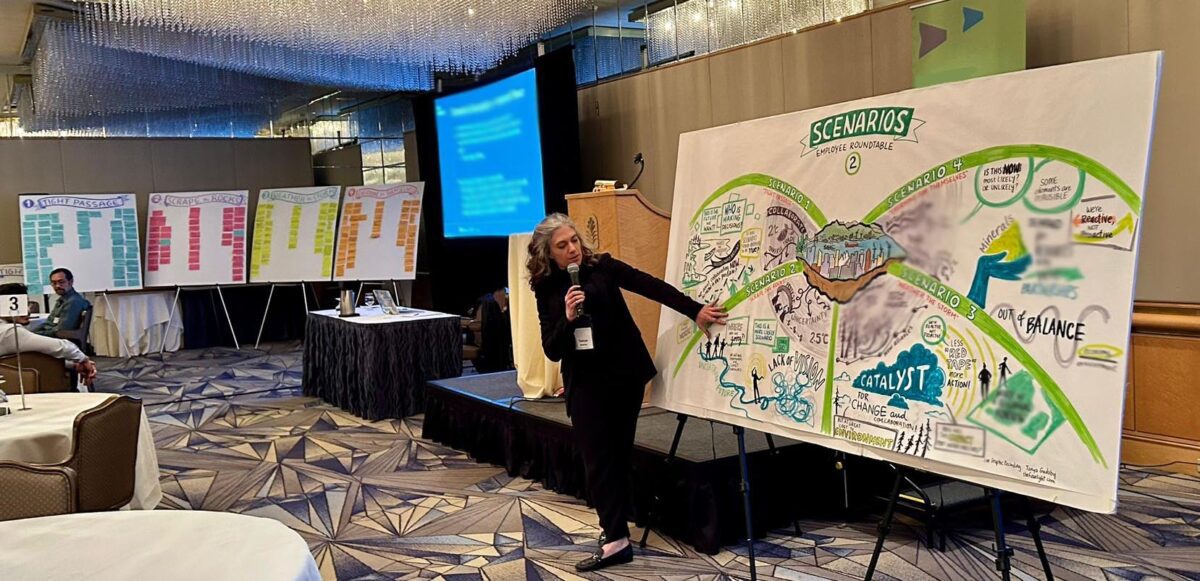
Tanya reporting out insights gathered from breakout groups (confidential info blurred)
A graphic recorder often fills this role, since they are skilled at visually summarizing from multiple breakout groups. But if you don’t have a graphic recorder at your meeting, someone on your team can step into the role of Sensemaker. It’s important this person has the ability to:
- Synthesize a lot of information into key takeaways
- Speed: work quickly across all breakout groups
- Big-picture thinking: connect it to the balcony-level view (and not get lost in the weeds of detail)
Finding the right person is essential for the Sensemaker role, and giving them the opportunity to practice and exercise this muscle.
Set the Sensemaker up for success
It’s not possible for the Sensemaker to be in all breakouts at all times, however, these are techniques we use to support them:
- Prioritization: determine ahead of time if you want each breakout to come up with top 3 ideas, top 1 idea, or another focus for their discussion. Prioritizing ideas pushes the breakout to have a meaningful discussion, and helps filter up the most important ideas to the Sensemaker.
- Note-takers: have a flip chart and an assigned note taker at each breakout. The note taker should be informed on how to take notes (not writing verbatim notes – check out our post about flip-chart note taking). The Sensemaker can then snap photos of each flip chart and use AI to help synthesize the notes into themes quickly. A dedicated note taker at each group also helps ensure no ideas are lost, even if they’re not the top ones reported out.
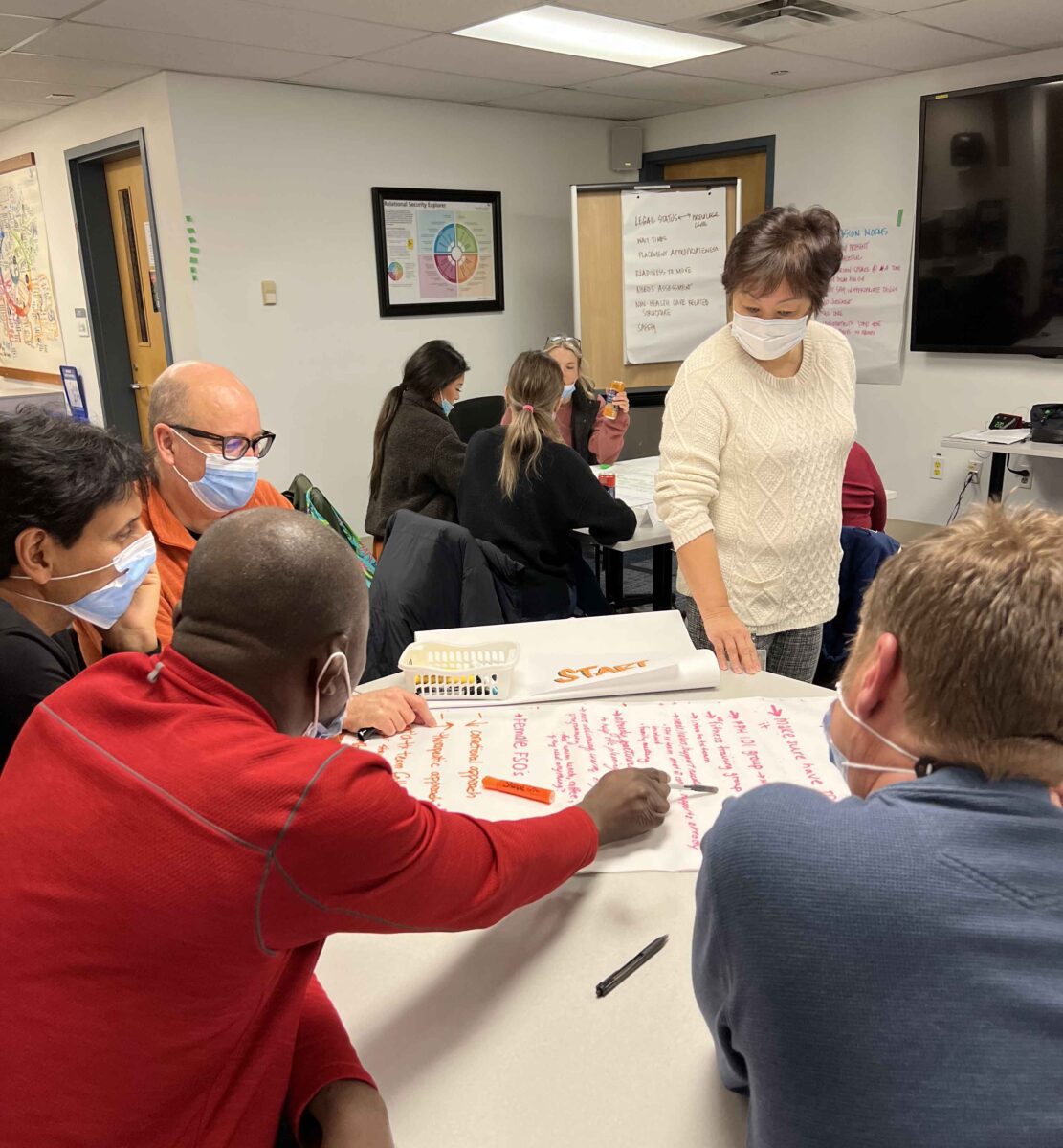
- Visit each breakout: the Sensemaker should briefly visit each breakout group to get a pulse on the discussions. They won’t be able to listen to all conversations, but excerpts help provide a sense of emotion behind the conversation.
- Processing time: build in time for the Sensemaker to process the notes from breakouts. After a breakout session concludes, send everyone for a 15-20 minute break so the Sensemaker can spend time synthesizing. Alternatively, have note takers from each breakout bring the Sensemaker a sticky note with their top 1-2 ideas.
Three tips for reporting out
When it’s time to report out, only the Sensemaker is the one who shares back to the whole room. They should also…
- Connect it to the big picture: avoid simply listing each group’s ideas. Instead, share back what the room discussed as a whole, common themes, and how it connects to the big picture. How will this impact our vision? Who needs to be included? Why does this all matter?
- Speak with passion and thoughtful reflection when doing the report back. Avoid monotone, lacklustre reporting. We need to keep the group engaged, curious, and willing to raise their hand and ask questions.
- Additional thoughts: after reporting out, the Sensemaker should open it up to the group for any thoughts or reactions to what was shared. This fosters a sense of ownership and ensures everyone’s voice is heard.
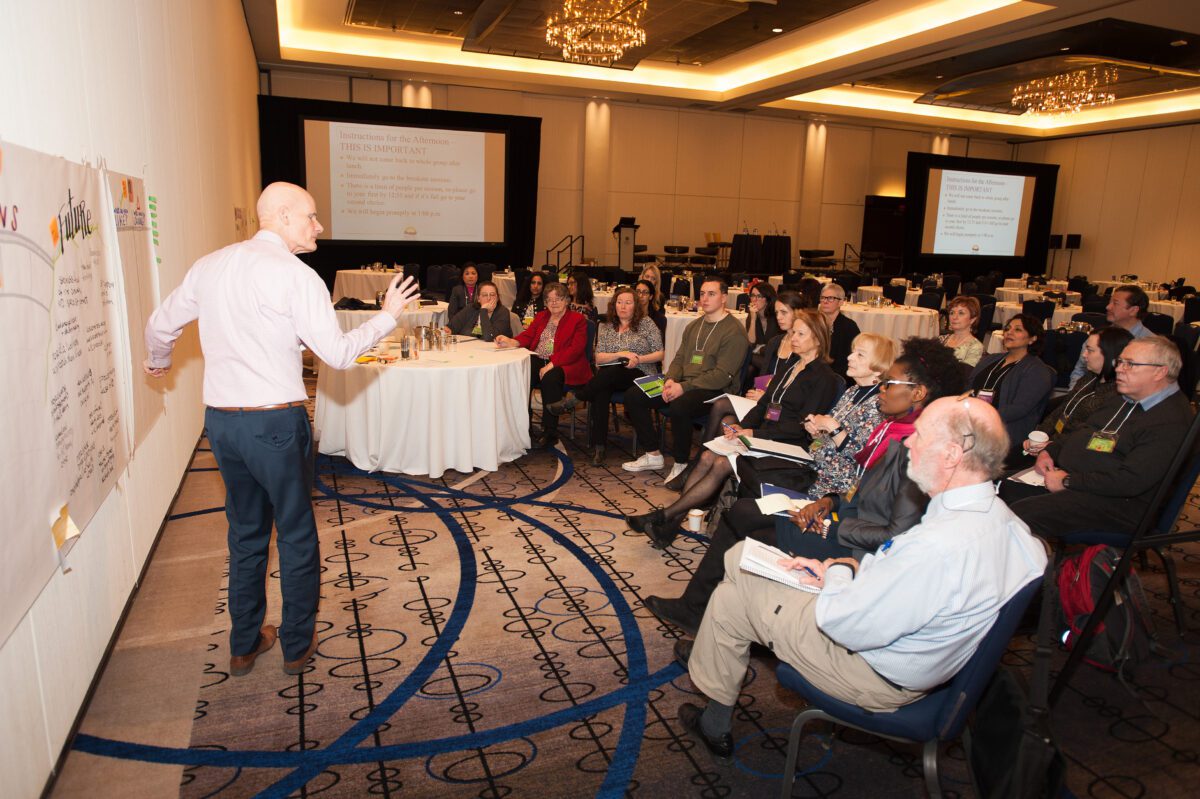
A Sensemaker speaks with passion during a report back to the group.
Sensemaker for the entire meeting
The Sensemaker’s role can extend beyond breakout sessions. They can also listen for themes across the whole meeting or conference. Just as a graphic recorder visually captures themes across many presenters and dialogues, the Sensemaker can take notes, reflect on what they’re hearing, and report back to the whole group at the end of the meeting.
By incorporating a dedicated Sensemaker into your meetings, you can transform your report-outs from tedious information dumps into engaging, insightful, and actionable summaries.
